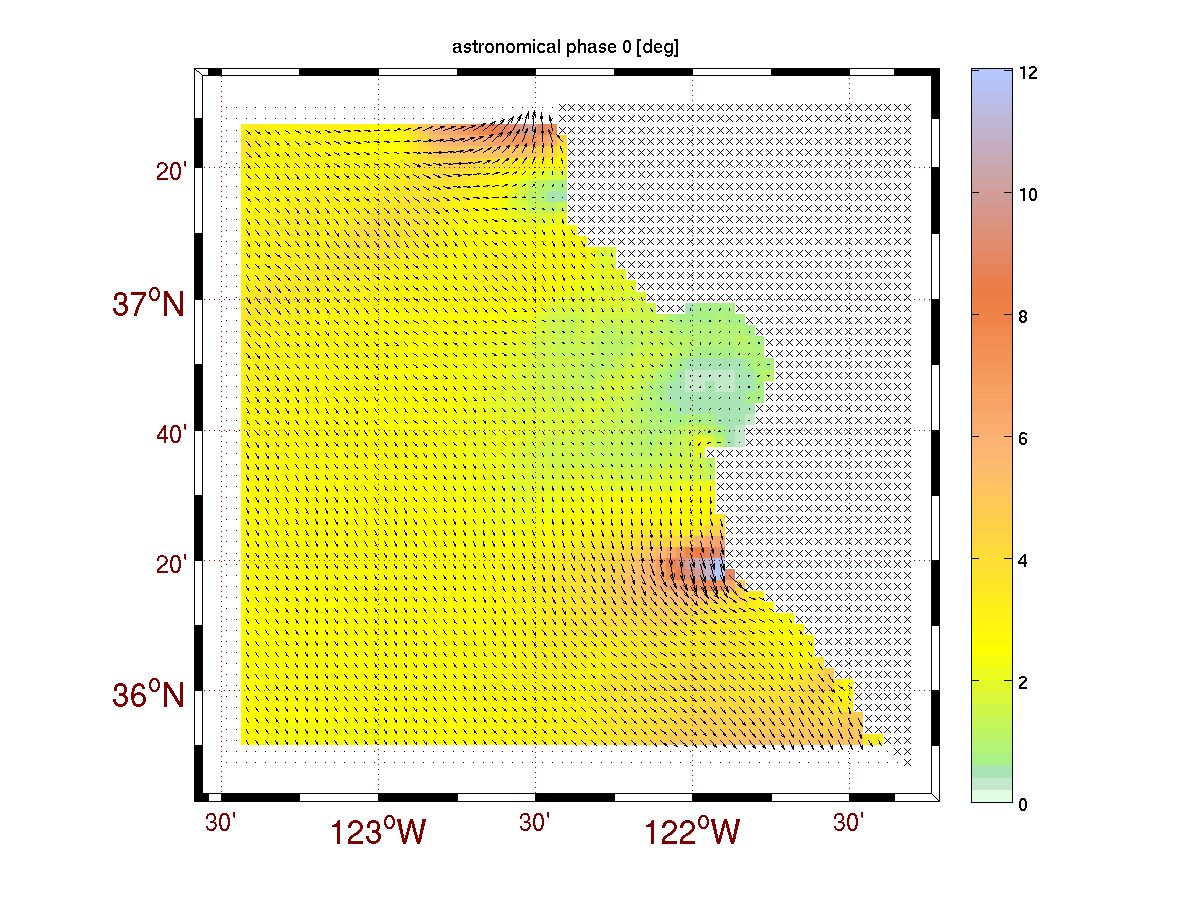
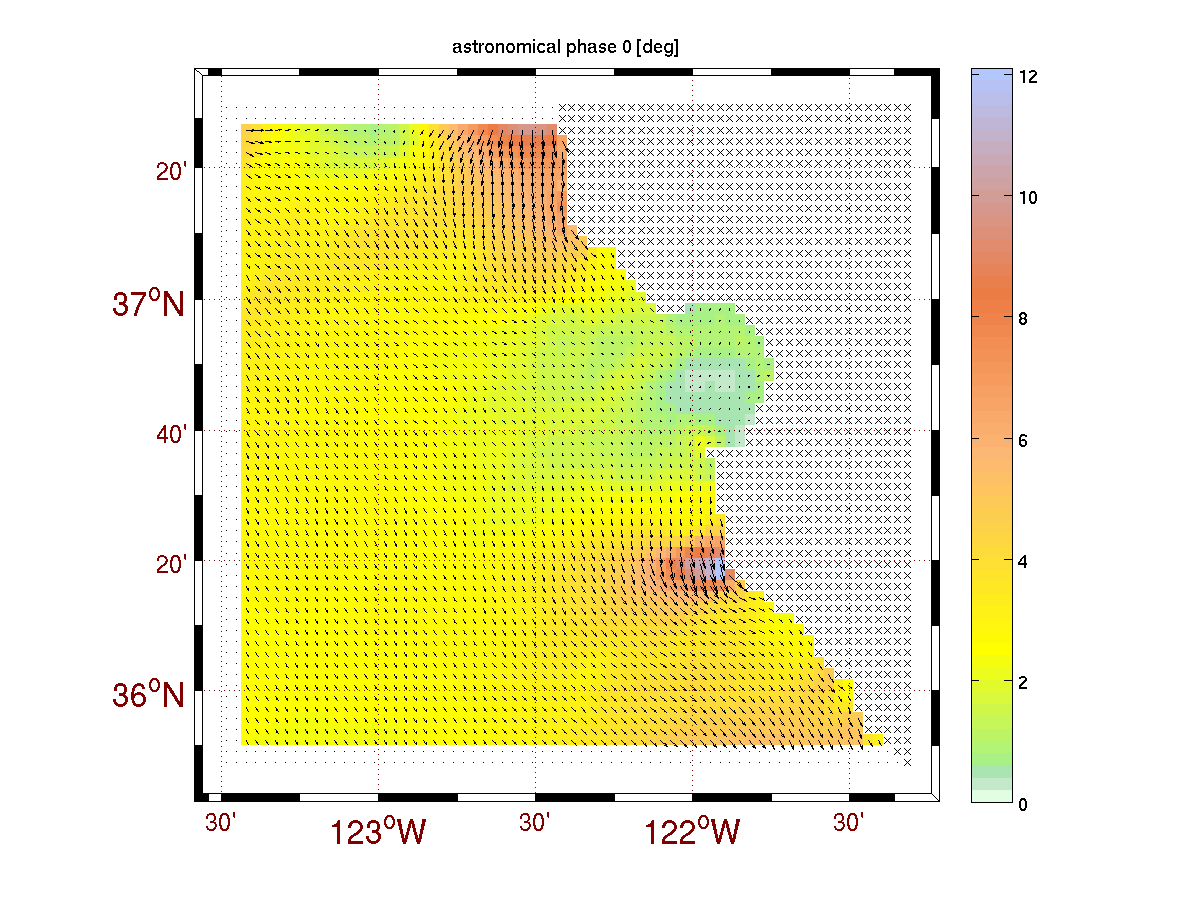
(Left) Dirichlet BC at all open boundaries; (Right) Absorbing (sponge-like) condition on northern boundary
Open boundary condition schemes and parametrization of the dissipative and non-linear terms in the depth-averaged momentum equations have been investigated. These efforts were directed towards understanding the effects of the OBC formulation, frictional and dissipative effects, and non-linear barotropic-to-baroclinic conversions on the barotropic tidal solution. The previously coded Dirichlet conditions at open boundaries have been augmented with the option of having Neumann and mixed open boundary conditions (OBCs). The sensitivity of the depth-averaged tidal solutions to the type of OBCs have been studied. In addition, various parametrization of bottom friction have been deployed. An iterative approximation method has been utilized to deal with the non-linearity in the dissipation term in the momentum equations. Bottom friction parameter estimation has been carried out by using the ADCP velocity data off the coast of Ana Nuevo and a fit of the tidal dynamics to data. The C-grid to B-grid interpolation effects have also been studied.
The diurnal tidal constituents (K1, O1, P1, etc) were found to be sensitive to the type of the OBCs specified in the ASAP modelling domains. According to our theoretical and numerical analysis, the sensitivity is related to the fact that the diurnal tidal constituent are sub-inertial in and north of the Monterey Bay basin. In the sub-inertial regime, the boundary value problem that results from the tidal depth-integrated shallow water equations is hyperbolic and requires consistent open boundary conditions. If inconsistent open boundary conditions are specified, wave-like adjustments near the open boundaries can arise. These adjustments are sensitive, firstly, to the degree of inconsistency in the open boundary conditions, as well as to the placement of the computational domain boundaries. The figure below shows the depth-averaged velocity field [cm/s] of the K1 tidal constituent in the Monterey Bay area. Two types of the OBCs have been specified. The left panel corresponds to the computations with the Dirichlet boundary conditions specified at all open boundaries. A wave like velocity field structure is seen near the domain northern boundary. As the Dirichlet boundary conditions is relaxed to an absorbing (sponge-like) condition on the northern boundary, the solution changes and no longer contains the wave-like adjustment near the boundaries. The second-type (right panel) solution compares better with the ADCP data. The semi-diurnal constituents are super-inertial, with the elliptic type of the boundary value problem, and do not exhibit the same level of sensitivity to the type of the OBCs as the diurnal (sub-inertial) constituent. Further studies of the OBC schemes and parametrization is currently in progress.


(Left) Dirichlet BC at all open boundaries; (Right) Absorbing (sponge-like) condition on northern boundary
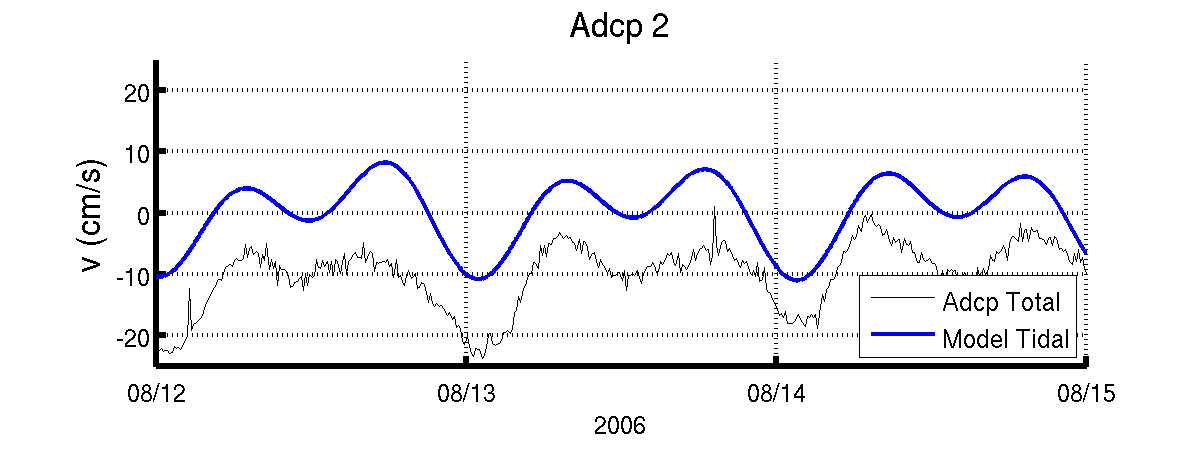
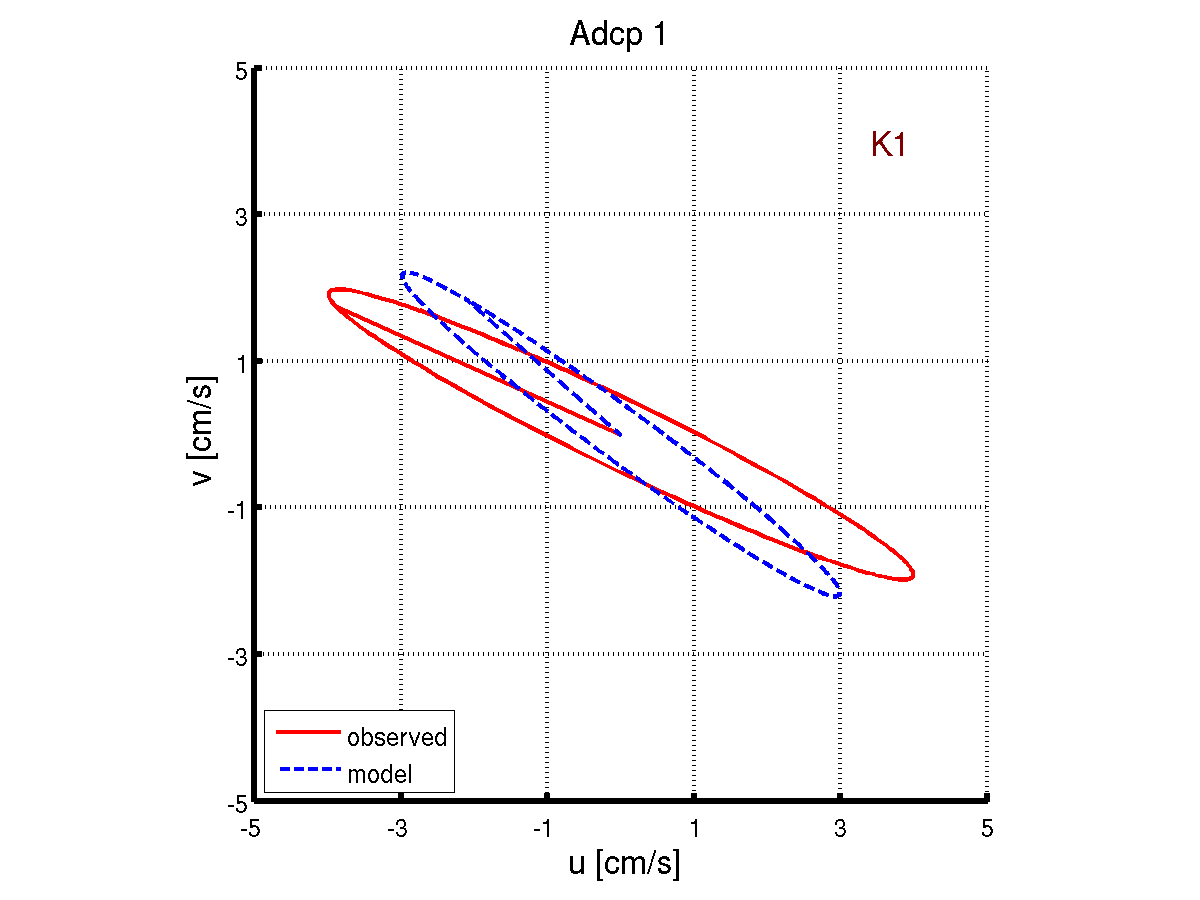
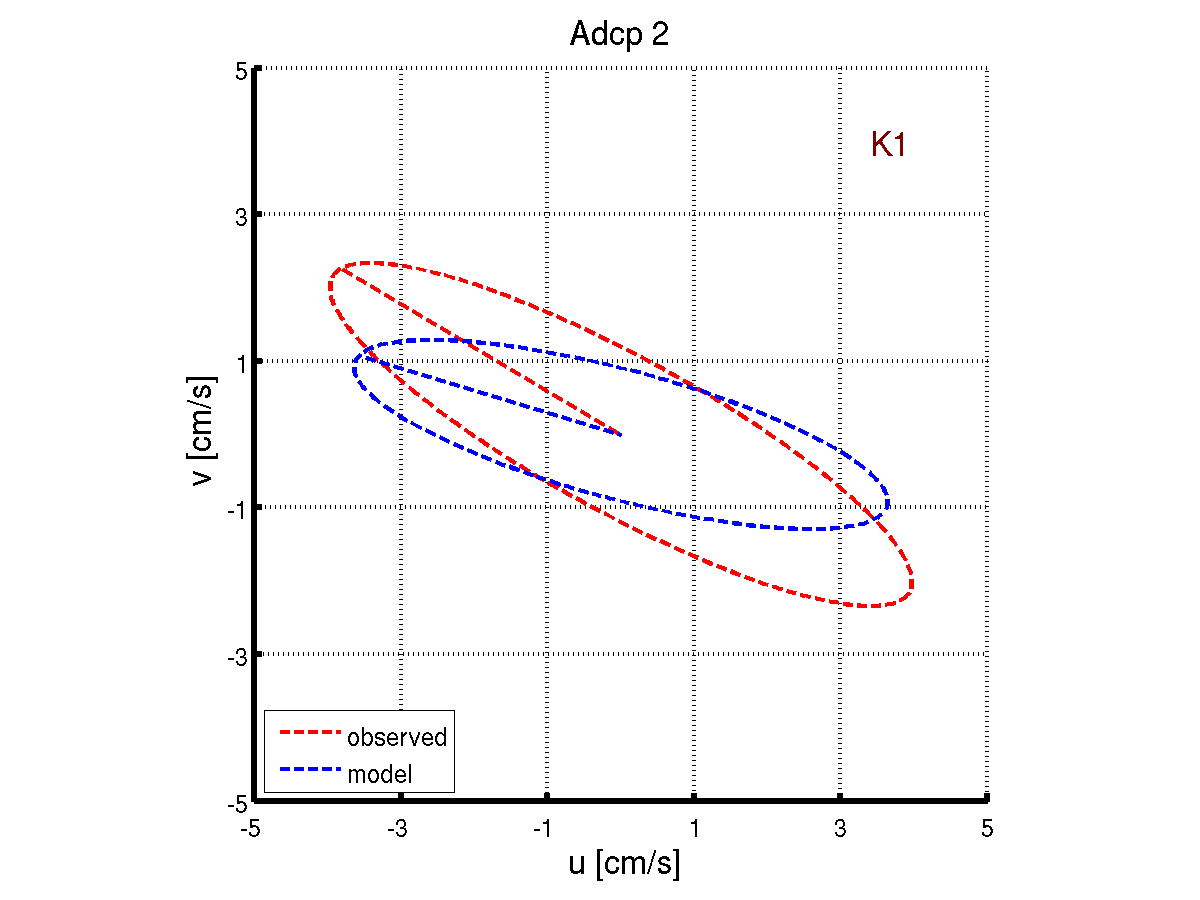
(Left) Sample of adcp averaged vs tidal model time series; (Center/Right) K1 ellipses: observed versus model at 2 adcp locations